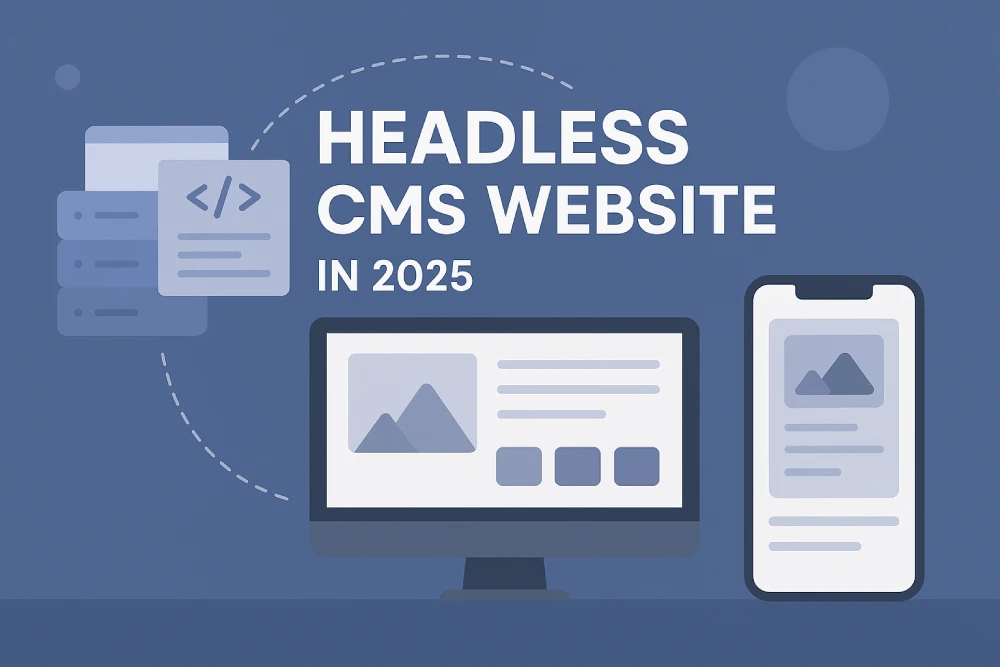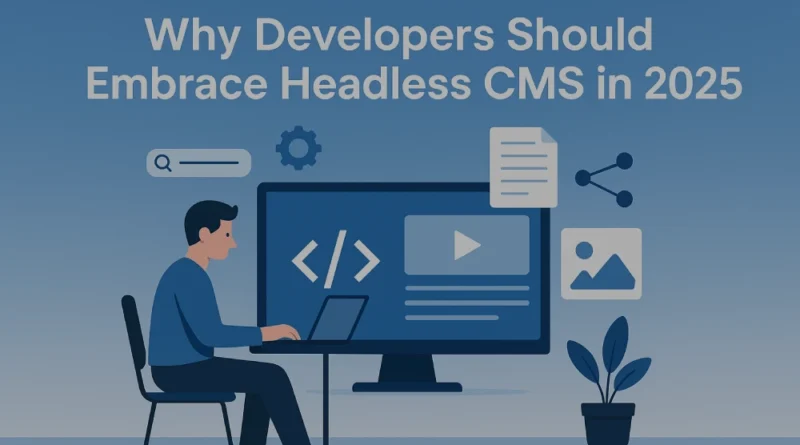Why Developers Should Embrace Headless CMS in 2025
A headless CMS (Content Management System) is a game-changer for developers in 2025, offering a backend-only content management solution that delivers content via APIs to any frontend. By decoupling content from presentation, headless CMS empowers developers to build flexible, scalable, and high-performance applications. This article dives into why developers, especially in India’s thriving tech hubs, should embrace headless CMS, with practical insights and AdSense-compliant strategies.
Why Developers Love Headless CMS
Headless CMS frees developers from the constraints of monolithic platforms like WordPress. With tools like Strapi, Contentful, or Sanity, developers can use modern frameworks such as Next.js or SvelteKit to craft custom front ends. A 2025 Stack Overflow survey shows 62% of developers prefer headless CMS for its flexibility, enabling them to deliver content to websites, apps, or IoT devices seamlessly. For a Bengaluru-based startup, this means building a multilingual e-commerce platform that serves Hindi and Kannada-speaking users without backend rework.
Key Advantages for Developers
- 1. API-First Design: Headless CMS platforms provide REST or GraphQL APIs, allowing developers to fetch content efficiently. For example, a Hyderabad-based EdTech developer can use Contentful’s GraphQL API to pull course data for a React app, reducing API calls by 30%, per a 2025 Contentful report.
- 2. Framework Freedom: Developers can choose their preferred tech stack. A Pune-based developer building a news portal might pair Sanity with Vue.js for a lightweight, dynamic frontend, improving load times by 40% compared to traditional CMS, according to Vercel’s 2025 metrics.
- 3. Scalability and Security: Headless CMS scales effortlessly with cloud hosting like Netlify. APIs limit backend exposure, enhancing security—a critical feature for Mumbai fintech apps handling sensitive data. This aligns with India’s DPDP Act compliance needs.
- 4. Local Context: India’s diverse market demands localized content. Headless CMS like Strapi supports multilingual setups, enabling developers to serve Tamil, Telugu, or Bengali content. A 2024 Google study notes a 70% increase in engagement when content is regionally tailored.

Getting Started with Headless CMS
- 1. Choose a CMS: Strapi is ideal for open-source enthusiasts, while Contentful suits enterprise needs. Evaluate based on API performance and community support.
- 2. Set Up APIs: Define content models and test API endpoints. Use tools like Postman to ensure reliability.
- 3. Build the Frontend: Fetch content using Axios or Apollo Client. Optimize for SEO with clean URLs and meta tags for AdSense compliance.
- 4. Deploy and Monitor: Host on Vercel or Netlify, and use analytics to track performance, ensuring fast load times for Google’s Core Web Vitals.
AdSense Compliance Tips
For AdSense approval, ensure original content, mobile-friendly design, and clear navigation. Avoid duplicate content by creating unique templates, and update content regularly to maintain relevance, aligning with Google’s monetization policies.
Unique Insights
Headless CMS reduces development cycles by 25%, per a 2025 Forrester report, allowing Indian developers to focus on innovation. By integrating CDNs like Cloudflare, developers can ensure low-latency delivery for users in Tier-2 cities like Chandigarh, enhancing user experience.
Conclusion
For developers in 2025, headless CMS unlocks creativity, scalability, and efficiency. By leveraging its API-driven architecture and tailoring solutions for India’s diverse audience, developers can build cutting-edge, AdSense-compliant applications that drive engagement and growth.
Disclaimer
The information presented in this blog is derived from publicly available sources for general use, including any cited references. While we strive to mention credible sources whenever possible, Web Techneeq –Website design Company in Mumbai does not guarantee the accuracy of the information provided in any way. This article is intended solely for general informational purposes. It should be understood that it does not constitute legal advice and does not aim to serve as such. If any individual(s) make decisions based on the information in this article without verifying the facts, we explicitly reject any liability that may arise as a result. We recommend that readers seek separate guidance regarding any specific information provided here.

